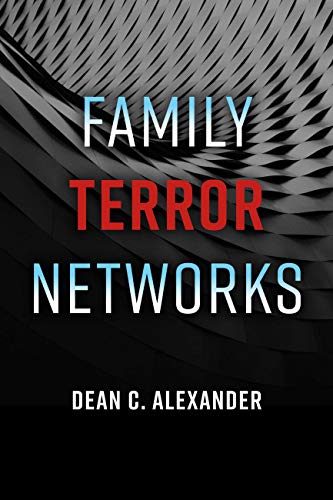Family terror networks—or alternatively, family-affiliated terrorism—involve two or more people from the same clan who support the threat or use of terrorism. Kin terrorism has appeared across diverse views from religiously motivated precepts to national liberation, and from hate-based ideologies to other viewpoints. Family structures enable higher instances of conversion to radical beliefs given the imprimatur of credibility and trust that attaches within the family unit as opposed to unaffiliated networks.

This subset of terrorists comprises a full range of socioeconomic, racial,
religious, ethnic, national-origin, and foreign-affinity ties. Terrorists
aligned with hierarchical and network groups and unaffiliated cabals are
represented in this form of terrorism as well. Family
affiliated terrorists include group leaders, operational cadres, active
supporters, and passive supporters. They use terror tactics including bombings,
suicide bombings, and gunfire, among others, with variances in operational
stages.
Noteworthy family-linked terrorist attacks in the United States include the Boston Marathon bombers, San Bernardino attackers, and two sets of brothers who performed as hijackers on 9/11. Additionally, three cousins participated in the 9/11 incidents. Also, family-affiliated terrorist actions have taken place globally. The cabal involved in the 2002 Bali terror bombings plots included three brothers. A fourth brother spent three years in prison for terror offenses unrelated to the Bali attacks.
More recently, French nationals and brothers Brahim and Salah Abdeslam participated in the November 2015 Paris attacks. Other contemporary instances of family-connected terrorism abroad include the August 2017 jihadi terror cabal in Spain that consisted of multiple sets of brothers, as did the terror family links in the jihadi-inspired May 2017 Manchester suicide bombing. In May 2018, two jihadi-aligned families were responsible for a series of suicide bombings in Surabaya, Indonesia, targeting churches and law enforcement.
Patriarchs strongly influence their kin to become terrorists. Wives and other females may sometimes embrace violence. The “Black Widows” of Chechnya are the most notorious of such radicals. These women had husbands in Chechen jihadist terror groups. Their spouses were killed by Russian forces or died during a terror attack on a Russian target. Also, the term is often used more expansively to include women whose other family members were killed by Russian forces in the Chechen conflict.
Family networks afford exposure to terrorist ideology, recruitment, funding, training, and operational opportunities more easily than those outside the familial structure. From their private setting, family members disseminate doctrine, culture, and grievances to their kin. These trusted family voices might engender cohesion and unity of purpose while inciting hostility against external threats. The family’s animus might be targeted at government, industry, nonprofits, nongovernmental organizations, the public, or a segment thereof.

Still, the belief system, values, power, control, and capabilities based in a family can afford member participants achievable, though sometimes measured, terror operations. Abandonment of terror plans in a family cell is less likely because it brings shame and dishonor to the family member. These conditions greatly contribute to radicalism being disseminated and maintained absent other factors.
Family terror network attributes may include self-sufficiency, autonomy, and flexibility. These might not exist when family members take direction from a non-family terror network. A family’s informal and decentralized structure is conducive to successful terror operations. Families have an ingrained resiliency as challenges are often encountered fervently.
Family terror networks are important for multiple reasons. Households are an integral part of traditional social networks. This paradigm allows radicalization and recruitment to occur in a setting of trust, confidence, and privacy. The family unit has a greater level of legitimacy than the outside world. Even after detection of a kin-linked terror cell, deradicalization and disengagement programs may not succeed as family members may impede participation.
Competing or incompatible opinions have trouble piercing the family network’s ideological wall with outside viewpoints. Trust ties arising from friendship, religious institutions, and schools are less sustained than family ties. It is improbable that kin will abandon their terrorist activities when extremism was sourced at home. Frequently, vocalizing concerns about engaging in terrorism is barred within a familial terror cell.
The zeal and skills gained through a family setting are magnified more than otherwise. Household members can teach the best practices of extremism to others. This radicalism exploits the trust and security features that exist in households.
People do embrace extremism despite not being introduced to such ideas at home. Yet, my research of over 100 cases proffers that family terror links appear in radicalism more willingly and thoroughly than those without kinship. Indeed, family structures are very influential in potential terrorist participation.
The author is professor/director of the Homeland Security Research Program at Western Illinois University. He is the author of the new book, Family Terror Networks (2019) available at Amazon.com.